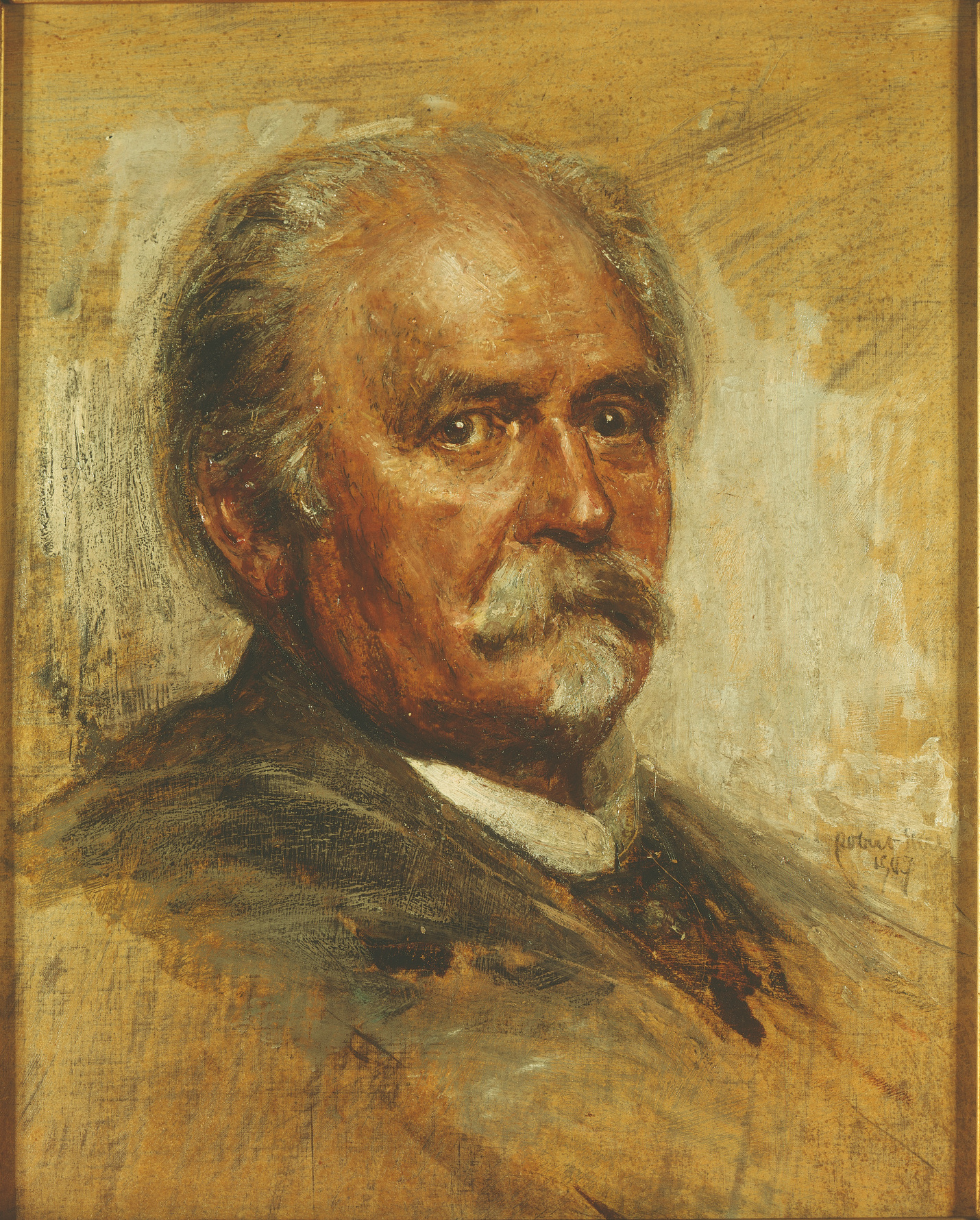Felix Draeseke
(7 October 1835 – 26 February 1913) was a composer of the "New German School" admiring Liszt and Richard Wagner. He wrote compositions in most forms including eight operas and stage works, four symphonies
==========and much vocal and chamber music.
During his career Draeseke divided his efforts almost equally among compositional genres and composed in most of them, including symphonies,violin concertos,
opera, chamber music, and works for solo piano.
With his early Piano Sonata in C-sharp minor Sonata quasi Fantasia of 1862–1867
he aroused major interest, winning Liszt's unreserved admiration of it as one of the most important piano sonatas after Beethoven. His operas Herrat (1879, originally Dietrich von Bern) and Gudrun (1884, after the medieval epic of the same name) met with some success, but were subsequently neglected.
Draeseke keenly followed new developments in all facets of music. His chamber music compositions make use of newly developed instruments, among them the violotta, an instrument developed by Alfred Stelzner as an intermediary between viola and cello, which Draeseke used in his A major String Quintet, and also the viola alta, an instrument developed during the 1870s by Hermann Ritter
and the prototype of viola expressly endorsed by Richard Wagner for his Bayreuth Orchestra.
A heavily contrapuntal composer, Draeseke reveled in writing choral music, achieving major success with his B minor Requiem of 1877–1880. His most contrapuntal work is called Mysterium "Christus", which is composed of a prologue and three separate oratorios and requires three days for a complete performance, a work which occupied him between the years 1894–1899 but whose conception reaches back to the 1860s.
According to some[who?], Draeseke's Symphonia Tragica (Symphony No. 3 in C major, Op. 40) deserves a place alongside the symphonies of Brahms and Bruckner. Other orchestral works by Draeseke include the Serenade in F major (1888), its companion of the same year, the symphonic prelude after Kleist's Penthesilea. Draeseke also composed chamber music.
< 작품 모음>
Notable works
Orchestral
- Symphony No. 1 in G major, Op. 12 (1872)
- Symphony No. 2 in F major, Op. 25 (1876)
- Symphony No. 3 in C major, Op. 40 "Symphonia Tragica" (1885–6)
- Symphony No. 4 in E minor, WoO 38 "Symphonia Comica" (1912)
- Julius Caesar, symphonic poem (1860, revised 1865)
- Serenade in D major for small orchestra, Op. 49 (1888)
- Penthesilea, symphonic prelude (after Kleist), Op. 50 (1888)
- Jubel-ouvertüre, Op. 65 (1898)
- Concerto for Piano and Orchestra in E-flat, Op. 36 (1885–6)
- Symphonic Andante for Cello and Orchestra in E minor, WoO 11 (1876)
An early symphony in C major, completed in 1856 and premiered that year, was still lost as of 1966.[3]
Operas[edit]
- König Sigurd - opera in 3 acts after Emanuel Geibel's Sigurd (1853–7)
- Dietrich von Bern - opera in 3 acts (1877; revised by Otto zur Nedden, 1925)
- Gudrun - opera in 3 acts (1879–84)
- Bertram de Born - opera in 3 acts (1892–4)
Choral and vocal (religious and secular)[edit]
- Christus. Mysterium in a Prelude and Three Oratorios, Opp. 70–73 (1895–9):
- Prelude: Die Geburt des Herrn (The Birth of the Lord), Op. 70
- First Oratorio: Christi Weihe (Christ's Consecration), Op. 71
- Second Oratorio: Christus der Prophet (Christ the Prophet), Op. 72
- Third Oratorio: Tod und Sieg des Herrn (Death and Victory of the Lord), Op. 73
- Grand Mass in A minor, Op. 85 (1908–9)
- Requiem in E minor (1909–10)
- Columbus, Cantata for soprano, baritone, male chorus, and orchestra, Op. 52 (1890)
- Der Mönch von Bonifazio Op. 74, a melodrama (1901)
Chamber music
- String Quartet No. 1 in C minor, Op. 27 (1880)
- String Quartet No. 2 in E minor, Op. 35 (1886)
- String Quartet No. 3 in C-sharp minor, Op. 66 (1895)
- Quintet in A major 'Stelzner-Quintett' for 2 violins, viola, violotta, and cello (1897)
- Quintet in F major for 2 violins, viola, and 2 cellos, Op. 77 (1901)
- Quintet in B-flat major for piano, string trio and horn, Op. 48 (1888)
- Viola Sonata No. 1 in C minor (1892)
- Viola Sonata No. 2 in F major (1902)
- Clarinet Sonata in B-flat major, Op. 38 (1887)
- Cello Sonata in D major, Op. 51 (1890)
Portions of this page are reprinted by permission of the Internationale Draeseke Gesellschaft and International Draeseke Society/North America.
'♣ 음악 감상실 ♣ > [1820년 ~1839년]' 카테고리의 다른 글
| [러시아-5인조의1인]César Cui (0) | 2017.04.18 |
|---|---|
| [오스트리아]Eduard Strauss (0) | 2017.04.17 |
| [이태리]Giuseppe Branzoli (0) | 2017.04.16 |
| [독일-리스트가 가장 아낀 제자]Julius Reubke (0) | 2017.04.13 |
| [폴란드-소녀의 기도로 유명한 여성 음악가]Tekla Bądarzewska-Baranowska (0) | 2017.04.13 |
